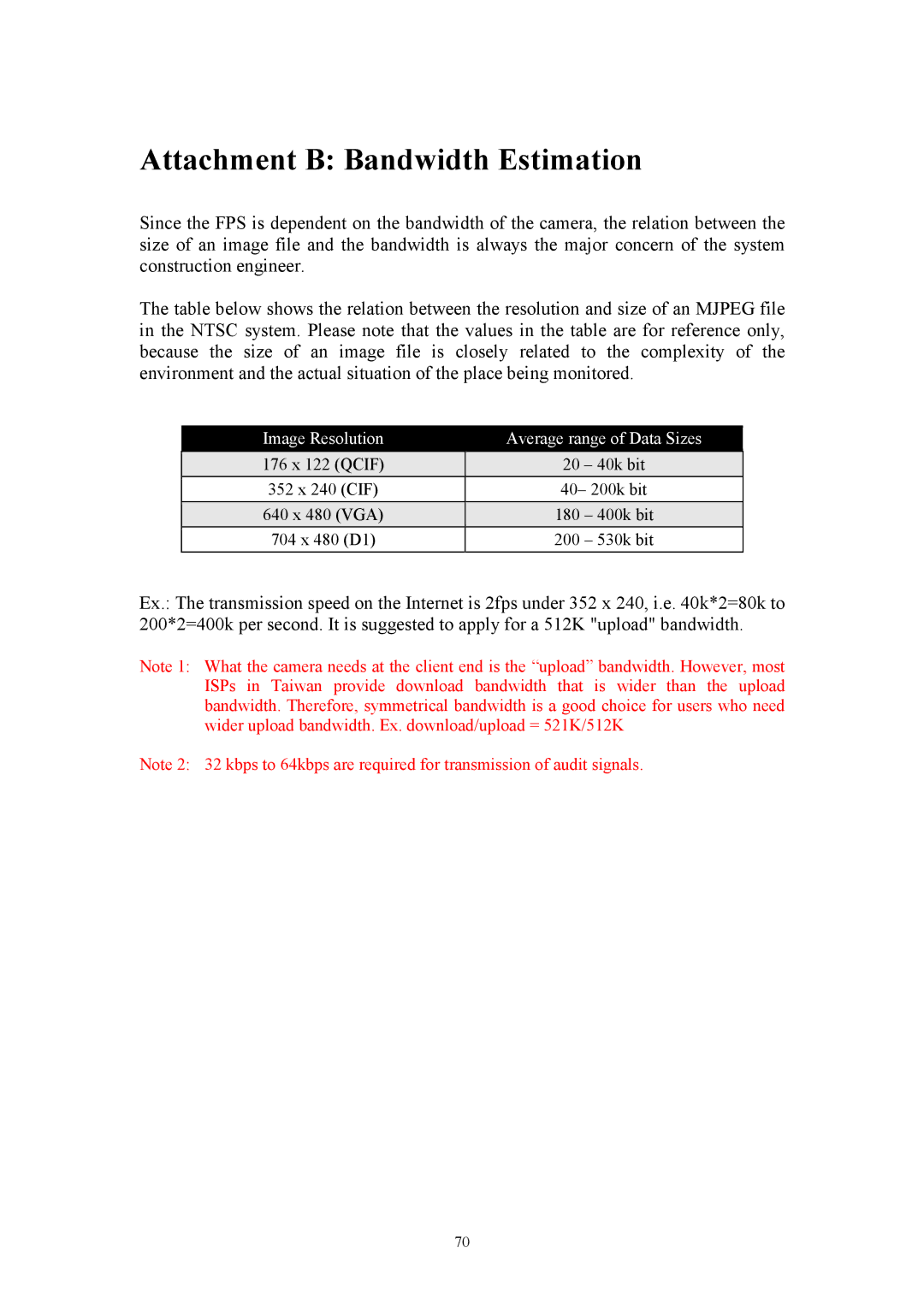
Attachment B: Bandwidth Estimation
Since the FPS is dependent on the bandwidth of the camera, the relation between the size of an image file and the bandwidth is always the major concern of the system construction engineer.
The table below shows the relation between the resolution and size of an MJPEG file in the NTSC system. Please note that the values in the table are for reference only, because the size of an image file is closely related to the complexity of the environment and the actual situation of the place being monitored.
Image Resolution | Average range of Data Sizes | |
176 x 122 (QCIF) | 20 | – 40k bit |
352 x 240 (CIF) | 40– 200k bit | |
|
|
|
640 x 480 (VGA) | 180 | – 400k bit |
704 x 480 (D1) | 200 | – 530k bit |
|
|
|
Ex.: The transmission speed on the Internet is 2fps under 352 x 240, i.e. 40k*2=80k to 200*2=400k per second. It is suggested to apply for a 512K "upload" bandwidth.
Note 1: What the camera needs at the client end is the “upload” bandwidth. However, most ISPs in Taiwan provide download bandwidth that is wider than the upload bandwidth. Therefore, symmetrical bandwidth is a good choice for users who need wider upload bandwidth. Ex. download/upload = 521K/512K
Note 2: 32 kbps to 64kbps are required for transmission of audit signals.
70
